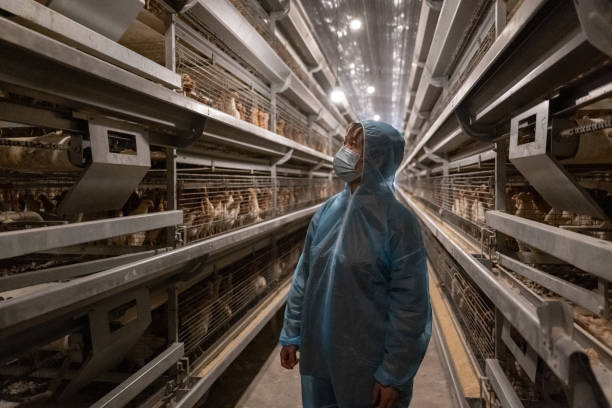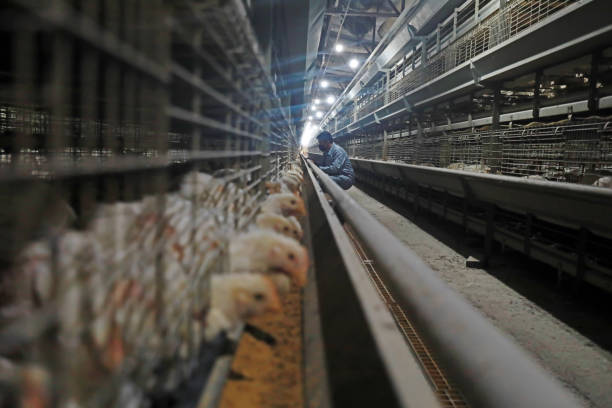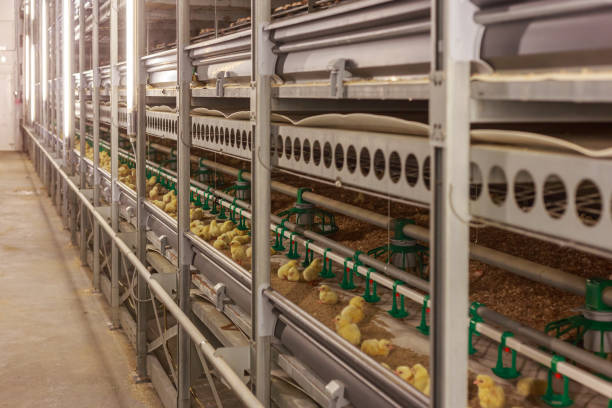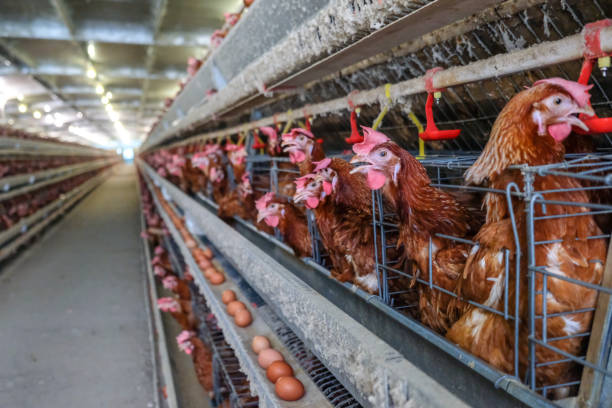
Poultry Farm Construction and Design Guide for African Farmers
Poultry Farm Construction and Design Guide for African Farmers
So, you’re thinking about starting a poultry farm in Africa? That’s fantastic! Poultry farming can be a rewarding and profitable venture, providing a vital source of protein and income for many African communities. But before you run out and buy a bunch of chicks, it’s crucial to have a solid plan and a well-designed farm. A successful poultry farm starts with careful planning and construction. This guide is designed to walk you through the critical aspects of building and designing a poultry farm that’s tailored to the unique challenges and opportunities in Africa.
Understanding the Landscape: Challenges and Opportunities
Africa presents a unique set of challenges and opportunities for poultry farmers. Understanding these factors is paramount to designing a farm that can thrive.
Challenges:
Climate Variability: Many parts of Africa experience extreme temperature fluctuations, intense heat, and seasonal rainfall. Farm design needs to mitigate these impacts.
Disease Prevalence: Poultry diseases, such as Newcastle disease and avian influenza, are common. Biosecurity measures are essential.
Feed Costs: Feed is a significant expense in poultry farming. Finding affordable and sustainable feed sources is crucial.
Access to Markets: Reaching consumers can be challenging due to poor infrastructure and limited market access.
Infrastructure Limitations: Reliable electricity, water, and transportation infrastructure are often lacking in rural areas.
Financial Constraints: Access to capital for initial investment and ongoing operations can be a barrier.
Opportunities:
Growing Demand: The demand for poultry products is increasing rapidly across Africa, driven by population growth and urbanization.
Local Production: Consumers are increasingly seeking locally produced food, creating opportunities for farmers who can meet this demand.
Employment Generation: Poultry farming can create employment opportunities, particularly in rural areas.
Income Diversification: Poultry farming can provide a valuable source of income diversification for smallholder farmers.
Manure as Fertilizer: Poultry manure is a valuable fertilizer for crop production, promoting sustainable agriculture.
Key Considerations Before You Build
Before you even think about laying the first brick, take a step back and consider these crucial aspects.
Define Your Goals:
What type of poultry will you raise? (Layers for eggs, broilers for meat, or both?)
What is your target production capacity? (How many birds will you house initially, and what are your long-term growth plans?)
What is your target market? (Local markets, restaurants, supermarkets, or exports?)
What is your budget? (How much can you realistically invest in the farm?)
Site Selection – Location, Location, Location!
The location of your farm is extremely important. Consider these factors:
Accessibility: The farm should be easily accessible by road for transportation of feed, birds, and products.
Water Availability: A reliable source of clean water is essential for drinking, cleaning, and sanitation.
Electricity Supply: Access to electricity is needed for lighting, ventilation, and other equipment. Consider alternative energy sources like solar power if electricity is unreliable.
Proximity to Markets: Being close to your target markets will reduce transportation costs and improve access to consumers.
Distance from Residential Areas: To minimize noise and odor complaints, the farm should be located away from residential areas. Check with local authorities regarding zoning regulations.
Topography and Drainage: The land should be relatively flat and well-drained to prevent waterlogging and disease.
Soil Type: Well-drained soil is essential for constructing foundations and disposing of waste.
Security: Choose a location that is secure from theft and predators.
Regulatory Requirements:
Before starting construction, research and comply with all relevant regulations and permits from local and national authorities. This may include environmental impact assessments, building permits, and animal welfare regulations.
Poultry House Design: Creating the Right Environment

The design of your poultry house is crucial for the health, welfare, and productivity of your birds. Here are some key design considerations:
Housing System:
Deep Litter System: This system involves housing birds on a floor covered with a thick layer of bedding material, such as wood shavings, rice husks, or straw. It is a relatively low-cost system but requires more labor for cleaning and maintenance.
Slatted Floor System: Birds are housed on a slatted floor that allows manure to fall through into a pit below. This system reduces contact with manure and can help improve hygiene.
Cage System: Birds are housed in individual or group cages. Cage systems can improve space utilization and reduce the risk of disease transmission, but they require more initial investment. (Consider regulations in your area regarding cage systems)
Size and Space Requirements:
Adequate space is essential for the health and welfare of your birds. Overcrowding can lead to stress, disease, and reduced productivity. The recommended space allowance varies depending on the type of poultry, age, and housing system. Consult with experienced poultry farmers or extension officers for specific recommendations.
As a general guide, for broiler chickens:
*Initial stage (0-2 weeks): Approximately 0.05 square meters per bird.
*Growing stage (2-6 weeks): Increase to about 0.1 square meters per bird.
*Finishing stage (6 weeks onwards): Provide at least 0.15 square meters per bird, potentially more depending on breed and desired weight.
For laying hens in a deep litter system, aim for around 4-5 birds per square meter. In cage systems, follow the guidelines set by local regulations and best practices which might vary, but typically allow enough space for the hens to move comfortably, stand, turn around, and stretch their wings.
Ventilation:
Proper ventilation is crucial for maintaining air quality, removing excess moisture, and controlling temperature. Natural ventilation can be achieved through openings in the walls, such as windows or curtains. In hot climates, consider using mechanical ventilation systems, such as fans, to improve airflow.
Ensure adequate airflow throughout the house. Place inlets and outlets strategically to avoid drafts directly on the birds. During warmer months, maximize ventilation to help birds dissipate heat. During cooler months, adjust ventilation to conserve heat while still maintaining air quality.
Insulation:
Insulation helps to regulate the temperature inside the poultry house, reducing the need for heating or cooling. Use insulating materials in the roof and walls to minimize heat transfer. This is particularly important in areas with extreme temperature fluctuations.
Consider using locally sourced materials for insulation, such as straw bales or compacted earth.
Lighting:
Proper lighting is essential for stimulating egg production in layers and promoting growth in broilers. Provide adequate light intensity and duration according to the specific needs of your birds.
Use energy-efficient LED lights to reduce electricity consumption. Install a timer to automatically control the lighting schedule.
Flooring:
The floor should be durable, easy to clean, and resistant to moisture. Concrete floors are ideal but can be expensive. Earthen floors can be used but require regular maintenance to prevent disease outbreaks.
For deep litter systems, ensure the floor is well-drained and covered with a thick layer of bedding material.
Roofing:
The roof should provide protection from rain, sun, and wind. Corrugated iron sheets are a common roofing material, but consider using insulated roofing materials to reduce heat transfer.
Ensure the roof has adequate overhang to protect the walls from rain.
Construction Materials: Choosing the Right Options
The choice of construction materials will depend on your budget, availability of resources, and local climate conditions.
Local Materials:
Utilize locally available materials, such as timber, bamboo, clay bricks, and thatch, to reduce construction costs and support local industries.
Durable Materials:
Use durable and long-lasting materials that can withstand the harsh African climate. Consider using treated timber to prevent rot and termite damage.
Affordable Alternatives:
Explore affordable alternatives to traditional construction materials, such as recycled materials, plastic sheeting, and woven mats.
Essential Equipment and Facilities
Besides the poultry house itself, you’ll need to equip your farm with the following:
Feeders and Drinkers:
Provide adequate feeders and drinkers to ensure all birds have access to feed and water. Choose feeders and drinkers that are easy to clean and minimize feed wastage.

Consider using automatic feeding and watering systems to reduce labor costs.
Nesting Boxes (for Layers):
Provide comfortable nesting boxes for laying hens to lay their eggs. The number of nesting boxes should be adequate for the number of hens.
Collect eggs regularly to prevent breakage and spoilage.
Brooders (for Chicks):
Provide a warm and safe environment for newly hatched chicks. Use brooders with adjustable temperature controls to maintain optimal chick comfort.
Ensure that the brooder is well-ventilated to prevent respiratory problems.
Waste Management System:
Implement a proper waste management system to dispose of manure and other waste materials. Composting can be an effective way to convert manure into a valuable fertilizer.
Proper waste management is essential for preventing pollution and controlling disease outbreaks.
Biosecurity Measures:
Implement strict biosecurity measures to prevent the introduction and spread of diseases. This includes:
*Controlling access to the farm
*Disinfecting footwear and equipment
*Implementing a vaccination program
*Quarantining new birds
*Practicing good hygiene
Storage Facilities:
Provide storage facilities for feed, equipment, and other supplies. These facilities should be secure, dry, and well-ventilated.
Farm Layout: Optimizing for Efficiency
The layout of your poultry farm should be designed to optimize efficiency and minimize labor costs.

Separate Units:
Separate different age groups of birds into separate units to prevent disease transmission.
Easy Access:
Provide easy access to all units for feeding, cleaning, and waste removal.
Wind Direction:
Orientate the poultry houses to take advantage of prevailing winds for natural ventilation.
Future Expansion:
Plan for future expansion by leaving enough space for additional poultry houses and other facilities.
Making it Sustainable: Environmental Considerations
Sustainable poultry farming practices are essential for protecting the environment and ensuring the long-term viability of your farm.
Water Conservation:
Implement water conservation measures, such as using low-flow watering systems and collecting rainwater.
Energy Efficiency:
Use energy-efficient lighting, ventilation, and heating systems to reduce energy consumption. Consider using renewable energy sources, such as solar power.
Manure Management:
Properly manage poultry manure to prevent water and air pollution. Composting manure can be a valuable way to reduce waste and produce fertilizer.
Biodiversity Conservation:
Protect and enhance biodiversity around your farm by planting trees and maintaining natural habitats.
Financial Planning: Making it Profitable
Finally, you’ll need a solid financial plan to ensure your poultry farm is profitable.
Budgeting:
Develop a detailed budget that includes all costs, such as construction, equipment, feed, labor, and marketing.
Funding Sources:
Explore funding sources, such as loans, grants, and crowdfunding.
Market Analysis:
Conduct a market analysis to determine the demand for poultry products in your area and identify potential customers.
Cost Control:
Implement cost control measures to minimize expenses and maximize profits.
In conclusion, constructing and designing a successful poultry farm in Africa requires careful planning, attention to detail, and a commitment to sustainable practices. By following the guidelines outlined in this guide, you can build a farm that provides a healthy environment for your birds, generates a reliable income, and contributes to the economic development of your community. Remember to seek advice from experienced poultry farmers, extension officers, and other experts to ensure the success of your venture. Good luck!
